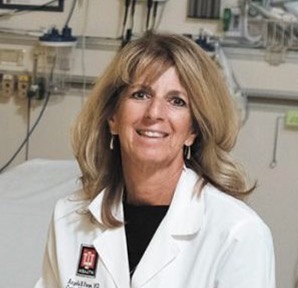Death of a Student: In a Source’s Own Words

In 2014, a student journalist at Indiana University named Jessica Contrera set out to write a story about another student at the university named Rachael Fiege. Contrera wanted to report on this young woman many university students had heard of but had never gotten the chance to really know. Fiege, a freshman, died at her first college party before attending a class.

To tell the story, Contrera contacted Rachael Fiege’s mother, Dr. Angela Fiege, who recounted the day she left her daughter on campus, explained what happened when she received the call saying her daughter had an accident, and many other intense, personal experiences regarding her daughter’s life and death.
Contrera’s three-part story in the Indiana Daily Student, headlined “After the fall,” earned her awards as four-year College Reporter of the Year and News Story of the Year from the Associated Collegiate Press. The honors were in no small part due to the personal, heartbreaking experiences Dr. Fiege shared with Contrera. Interviews like that require sensitivity by the reporter and a source willing to be open about painful experiences.
Reporters engage deeply with sources for stories like this, but, understandably, the reporter then usually moves on to other things. Not so for the source. So, it’s helpful to hear what it’s like to be in the source’s shoes — to be approached by a reporter and to share personal experiences, then to read about them in the paper or see yourself on TV, knowing that hundreds if not thousands of other people are reading or seeing it as well.
Student journalist Lacy Margaret Hurd asked Dr. Fiege about being the source for the story about her daughter.
Lacy Margaret Hurd: How were you approached by IDS, and what made you want to share your daughter’s story? Did you have a lot of input in what was written?
Angi Fiege: So, that whole story is interesting in and of itself. When Rach died, I don’t know if it was just a slow news time or what, but the story kind of went crazy in the media and the local news stations and whatnot. And so, of course, all the local TV channels are running things which everybody else had picked up. We got requests from The Huffington Post and “Inside Edition.” I always felt after listening to their pitch that they had ulterior motives, and they weren’t interested in telling my daughter’s story or in honoring her life. So, we declined all those.
And then this student, Jessica Contrera, from the Indiana Daily Student, called me. She said the right things. She said that she wanted to use Rachael’s story to help other students, and that’s why I decided to talk to her. The first time I met her was down in Bloomington. And I liked her. I mean, I could tell she was genuine.
And then, over the next several months, she came up to my house a bunch along with (photographer) Anna Teeter and (designer) Emma (Grdina). But mainly it was Anna and Jessica. I told them at the end of the whole thing, “You guys have been like grief counselors.” I just talked and they listened, asked questions and were really genuine.
You asked how much input I had. I had quite a bit of input. I told them my ground rules are that “you don’t disparage my daughter in any way, shape or form.” I think what they wrote was extremely accurate. And, you know, she had been drinking, I mean, we know that, so you can’t hide that. I don’t necessarily think that’s a bad thing, either. I think now, we just have to be real careful. So that’s kind of how it all came down.
In real honesty, they did help me out by just allowing me to talk because I don’t know if you’ve had a loss in your life at all or know people who’ve had a loss, but most people don’t want to talk about it, you know? And for them to have a project to work on, but allow me to just spill my guts, that was helpful to me as well.
Q: Was it hard to share this story with someone who was a stranger?
A: I think it was just her approach. And maybe it was the time that I needed to talk. A lot of this was a bit of a blur. It was such a horrible, horrible time. I think that her gentle way of asking questions and just letting me ramble on made it easy for me to talk to her. So, I think you’re spot on that it’s easier to talk to a stranger sometimes because, when I would talk to her friends or my friends, it would get to the point it was too uncomfortable for them to deal with it. They were grieving themselves and they didn’t need to have me grieving on top of whatever their grief was. I think maybe you’re right about the stranger part.
Q: How did you feel about the final published product?
A: I read it when it first came out once, and I didn’t read it again until today (spring 2020).
Reading it again today, I thought she did a magnificent job. I think it’s written in a way that gets the attention of the reader, mainly the students. I think that every one of these kids can kind of relate to it because she used references to the things that go on at a university. They can relate to the whole college experience, beginning college, the first college party, etc. The style she wrote appealed to the readership, and she did a great job. So yeah, I didn’t read it again until today.
Q: What is the main mission of “Rachael’s First Week”? Did the story come first or the initiative?
A: This was in February (2014) after she died in August (2013). I decided I wanted to develop a program for students. This is what Rachael would do — she would help other students and use her story as a springboard to not judge kids but to give them the information they can put in their pocket so that when they’re in that situation at a party where they see someone passed out or somebody with a traumatic brain injury they’ll know what to do. You’re often thinking, “They’re drunk,” when really they’re injured. So that’s sort of how “Rachael’s First Week” got started.
Media Attributions
- 48511001362_b3232c8255_k
- afiege

